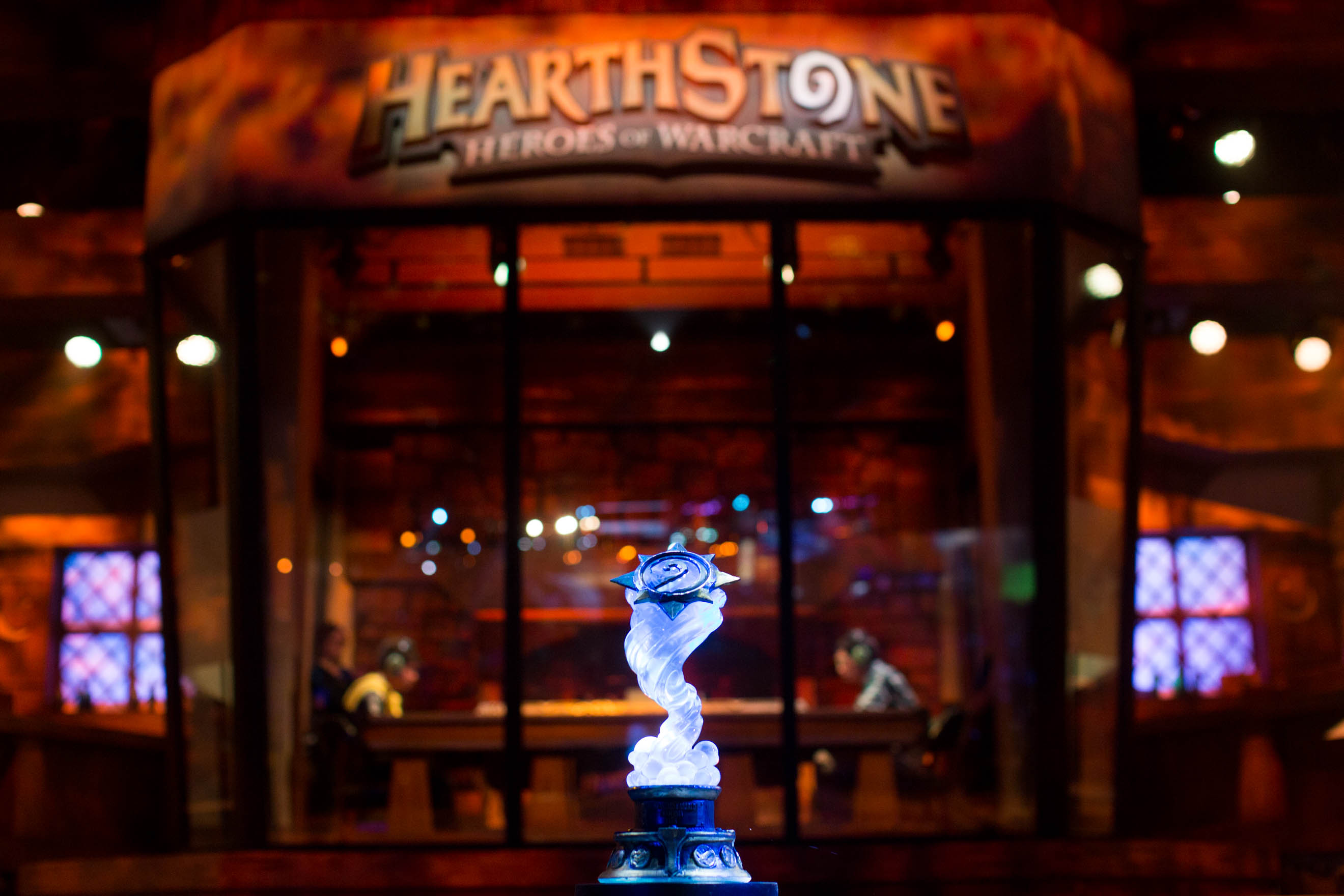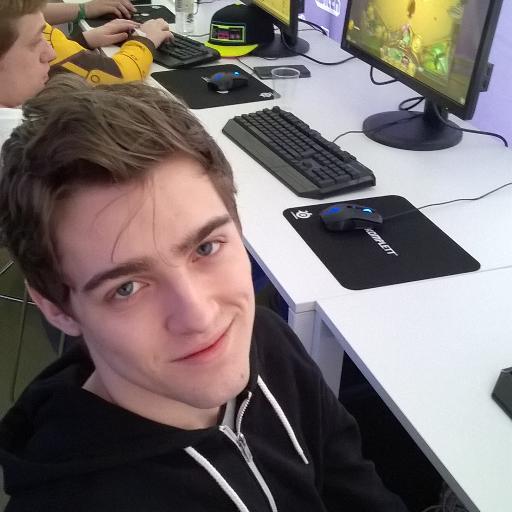Hearthstone World Championships: Day one's big talking points


Will is a professional Hearthstone player on the ManaLight team and recently finished 3rd/4th at Dreamhack Cluj. He also loves to write about the game, having contributed several articles to Team Archon’s site. You can find him on Twitch here and on Twitter here.
It can be difficult to fully grasp the significance of the Hearthstone World Championships at BlizzCon. The cheery hosts, relaxed atmosphere and tavern-style decor do little to suggest that this is anything other than a fun tournament for a casual game.
But the eight players who started the Finals only arrived here after grinding the ladder for countless hours to rack up WCS points, and then navigated online and offline regional qualifiers just to make it to the round of 16. From there, they had to emerge from four-man group stages featuring some of the biggest names in competitive Hearthstone. Lifecoach, Purple and Neirea—massive names in the competitive Hearthstone scene—all fell at this hurdle.
The stakes are high before you even factor in the $100,000 the winner stands to receive. Each player knows how lucky he is to be there, and how arbitrarily it could be snatched away. Everyone has prepared meticulously, and their nerves will all be on edge. With the scene set, here are the biggest talking points from the first day’s games…
Clash of approaches between Thijs and Kranich
Looking at the two deck lineups, Thijs became even more favoured. He elected to take Dragon Priest, Patron Warrior and Freeze Mage to the tournament—three decks that excel at shutting out aggressive strategies. Kranich, by contrast, took Warlock Zoo, Midrange Hunter and Double Combo Druid. On paper, this could hardly have been better for Thijs. Zoo and Midrange Hunter—both aggressive decks—have unfavoured matchups vs all of Thijs’ decks, while Druid is considered the underdog versus both Dragon Priest and Patron Warrior. Druid is the favourite vs Freeze Mage, but this is the sole situation where one of Kranich’s decks could be considered to have the edge.The first series of the day was between G2’s Thijs and Team Dignitas’ Kranich. Thijs came into this match as the huge favourite. The Dutchman has been an all-conquering juggernaut recently, and sits on top of the GosuGamers world ranking by a clear 200 points of elo.
And yet it was close. Take a look at this crushing Zoo victory from Kranich in the video, in which Thijs just fails to draw any answers for the Korean’s aggression. The whole series represented a battle between proactivity and reactivity. Thijs had the better answers, but needed to draw them on cue, while Kranich had an abundance of threats with which to apply pressure. The series ended 3-2 in Thijs’ favour, but at the death Kranich was only one draw off winning. He didn’t hit the card he needed, but it’s extraordinary how close a contest this was despite the lineup disparity. Maybe Thijs isn’t such a sure-thing after all.
The return of Shaman and Rogue
Ask any relatively engaged Hearthstone player what the two worst classes in the game are, and odds are they will tell you Rogue and Shaman. Peculiar, then, that these two classes are not just present at Blizzcon, but actually pretty well-represented.
Ostkaka and Hotform both elected to bring versions of the bursty Oil Rogue archetype. As for Shaman, the Taiwanese player Pinpingho picked his trademark Midrange deck, and even threatened Ostkaka with Thrall’s catchphrase, “The elements will destroy you!”, in the pre-game interview. There was another Shaman on show, too, with China’s DieMeng favouring the aggressive Mech variant, presumably in the hope of dismantling his opponents with explosive starts.
The biggest gaming news, reviews and hardware deals
Keep up to date with the most important stories and the best deals, as picked by the PC Gamer team.
The results were mixed. Rogue performed the better of the two classes, but Ostkaka lost once, and Hotform twice, before winning with the deck, resulting in an overall score of 2-3 for Rogue. Shaman did worse, with neither of the players piloting the class able to win a single game with it.
The only time the two classes matched up directly was in the fourth game between Ostkaka and Pinpingho. While you always have to give Rogue the edge in this matchup, this game nevertheless illustrates Midrange Shaman’s weaknesses as an archetype. Particularly the vulnerability to a well-timed board wipe. With abundant card draw and an empty board, Ostkaka had all the answers.
‘Esportal’ continues to decide big games
For those unfamiliar with Hearthstone, Unstable Portal is a Mage spell that gives its player a completely random minion at a discounted cost. As you can imagine, the outcomes range from completely useless to game-endingly powerful. It’s a card that the pros hate but spectators love, Unstable Portal is too potentially powerful not to include in certain Mage decks, but its inherent randomness is equal-parts exhilarating and frustrating.
In his first game versus Zoro, Hotform cast Unstable Portal on turn two. The minion he received was Dreadsteed, a unique card that leaves a copy of itself in play when it dies. It’s hard to imagine a better card to deal with an aggressive paladin deck than a mana-discounted Dreadsteed, since the earlier it can start chipping away at enemy minions, the more value it will get over the course of the game.
Hotform may well have won without the Dreadsteed, but he also might not have. We’ll never know, because the game was decided as soon as Unstable Portal gave him that card. Love it or hate it, the impact of RNG on competitive Hearthstone is huge, and you’ll struggle to find a better illustration of it than this Unstable Portal, which took place in a game for a place in the World Championship semi-finals.
Kno keeps his cool as the casters stumble
Kno is 1-0 down, ahead on board as Midrange Paladin versus DieMeng’s Mech Shaman, but he has only 3 life. DieMeng has Doomhammer equipped, which will guarantee 4 damage to Kno’s hero next turn. Kno can equip Truesilver Champion and attack face to heal up to 5 life, and potentially survive the next turn if DieMeng has no damage in hand. But Diemeng does have damage in hand. He has a Crackle, meaning Kno’s only chance to win is to end the game now by killing his opponent this turn.
The casters know this, so they count for lethal with Truesilver Champion plus one damage from the Knife Juggler’s effect which will be activated by the Paladin hero power. It’s one off. It’s over, they conclude. Twitch chat starts to spam ‘GG’. But all the while Kno is counting on his fingers, checking and rechecking, before eventually nodding to himself and committing to a play. He plays the second Knife Juggler, then uses his hero power, then plays Big Game Hunter, granting him 5 extra damage. It’s exact lethal.
Not only is this great comedy—with the casters frantically drawing the wrong conclusions, then being shocked by Kno seeing the lethal they all missed—but it’s also a fantastic demonstration of Kno’s credentials. Instead of panicking, he very calmly counted up his damage and closed out the game. He went on to win this series 3-1, then gave a great interview, full of confidence about how he is going to win the whole thing. I don’t know about you, but I might just have a new favourite.

PC Gamer Pro is dedicated to esports and competitive gaming. Check back every day for exciting, fun and informative articles about League of Legends, Dota 2, Hearthstone, CS:GO and more. GL HF!

